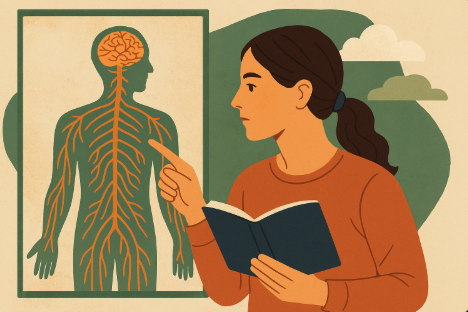Everyone talks about sleep, water, diet, and movement. Wellness trends fill timelines. But something vital gets skipped, and that is the nervous system. It runs the whole show: heart rate, breath, digestion, and mood. If it's out of balance, nothing else holds steady.
And yet, most people don’t know how to listen to it. Let alone work with it. This isn’t just science. It’s survival. If you ignore your wiring, even the best routines can feel like pushing a boulder uphill. Nervous system literacy doesn’t require lab coats; it starts with paying attention. And no, it’s not all in your head. Instead, it’s also in your spine.
Why We Should Start With the Nervous System
Wellness gets sliced into pieces, such as food, steps, mindset, skincare, etc. But the thread connecting them often gets lost, and that thread is the nervous system. It shows up everywhere, whether it comes from how you wake, how you speak, or how you hold your shoulders during conflict. Let’s break it down.
1. Your Body Keeps the Score without Telling You
Stress doesn’t always scream; sometimes it whispers. Tight jaws, clenched fists, fast talking, and shallow breathing are signals that often go unnoticed. But they come from real shifts inside the nervous system.
The body reacts to signals, even small ones, such as loud noises, fast traffic, and angry faces. The body responds before the brain catches up.
And the longer you stay in that alert mode, the harder it becomes to return to calm. People feel “on edge” without knowing why. But their nervous system has already hit the gas pedal. Their brain is just along for the ride.
2. The Autonomic System Isn’t Automatic After All
Two big systems control your stress and rest. The sympathetic system revs things up, and fast heartbeats, quick breath. The parasympathetic system slows things down, such as rest, digest, and sleep.
They trade shifts, like tired workers. But if one doesn’t clock out, the other can’t come in. That’s where people get stuck, and high alert becomes the new normal. Or, on the flip side, they crash into shutdown as they can’t focus or act, and are just numb. This is why knowing the signs matters. You can’t fix what you can’t see.
3. Breath Is the Shortcut You Forgot About
You breathe over 20,000 times a day. But most people do it like they’re hiding from a bear with their breaths being tight, short, or shallow. Your breath is a key as it opens doors to either stress or calm. A few things it controls:
- Heart rhythm
- Muscle tension
- Blood pressure
- Emotional tone
Slow breathing tells your system it’s safe and gives the “all clear” signal. Fast breath does the opposite as it yells “danger” even when you're safe on the couch.
4. Trauma doesn’t stay in the Past If Your Body Thinks It’s Present
You might forget, but your body doesn’t. Old hurts, such as accidents, bullying, fear, etc., can leave marks deep in the system. Crowds make your stomach flip, loud sounds make you flinch, and a certain smell freezes you. Either way, that’s your nervous system calling the shots.
And you’re not broken. Your system just learned survival too well.
Many people chase wellness by fixing surface stuff. But if the body still feels unsafe, wellness habits can feel like punishment instead of care. Understanding your nervous system isn’t about blaming the past. It’s about giving your body the memo: we made it.
5. Movement Is More than Fitness
You hear “exercise” and think: gym, but movement, even small, sends messages to the nervous system.
Bouncing your heels, shaking your arms, and stretching slowly aren’t workouts, but they’re check-ins that say:
- I’m here.
- I’m alive.
- I’m not frozen.
People stuck in stress often stop moving. They slump, freeze, curl up. So gentle motion helps wake the system back up. It says, “You’re safe to move now.” Dancing in your room, walking barefoot, and even tapping your chest can help.
6. Tools and Reviews That Help
There’s no one-size-fits-all method. What soothes one person might irritate another. Some people love cold plunges while others feel worse. Some need stillness while others need music and motion.
You’ve got to find what fits your wiring. Apps, breathing tools, nervous system courses, they’re everywhere now.
Before clicking buy, check reviews to see what worked and what flopped. Sites like TrustFeed.io help you sort the noise. You’ll find real feedback, not just flashy claims.
Remember, tools don’t fix people. But they can support change if they match your state. Don’t copy someone else’s path as you’re not wired like them.
Conclusion
Wellness talk often skips the one thing that runs the whole show. The nervous system isn’t a bonus topic. It’s the base layer. Once you start listening to its signals, the rest makes more sense as you eat better, sleep deeper, and connect more easily. It starts with learning what your body’s already been saying.
